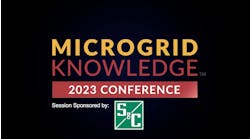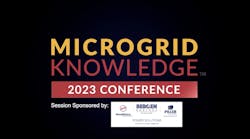The Inflation Reduction Act (IRA) is top of mind for many in the microgrid industry because of the massive benefits it brings to the microgrid market.
But what does the payback period really look like for those investing in a residential or industrial microgrid?
Yashar Barut, CEO and founder of Ikaggen and the former director of power strategy for the commodity desk at Citibank, recently sat down with Elisa Wood, editor-in-chief of Microgrid Knowledge, to discuss just that.
Barut explained the results of his investigation into the payback period for microgrids that include solar, battery storage and generator resources of more than 500 kW each. He assumed a 3% annual grid electricity rate increase.
The payback for behind-the-meter solar generation varies
Barut found that, as a result of the IRA, large residential users can expect to see, on average, a payback period of seven to 15 years for behind-the-meter solar generation.
Large commercial users and large industrial users can expect to see payback periods of 10 to 15 years and 15-plus years, respectively.
Barut said the reason large industrial users have longer payback periods is because “they get such beneficial rates, and, in some cases, they can get transmission rates directly and do not even pay the distribution rate.”
In other words, they’re incentivized to stay on the grid and not likely to invest in rooftop solar until they see a big price increase from their utility.
Other key findings
Barut also presented other key findings that emerged during his study.
He predicted that short payback periods will lead to net-metering rates being rolled back across the country. He said that will drive growth in the behind-the-meter battery storage market as microgrid owners look for other ways to capture value from their systems.
Barut also noted there are a number of factors that impact the duration of the payback period, including the state in which the microgrid is located, whether the microgrid is installed under a power purchase agreement, if the owner can participate in demand response programs, and if they can sell energy to the grid or the wholesale electricity market.
In the video, Barut and Wood also discussed the potential impact of the recent legislation in Texas that will provide $1.8 billion in grants and incentives for microgrids and electric vehicle bus batteries. He said he expects these funds will be available starting in 2025.
Track news about microgrids by subscribing to the free Microgrid Knowledge newsletter.








